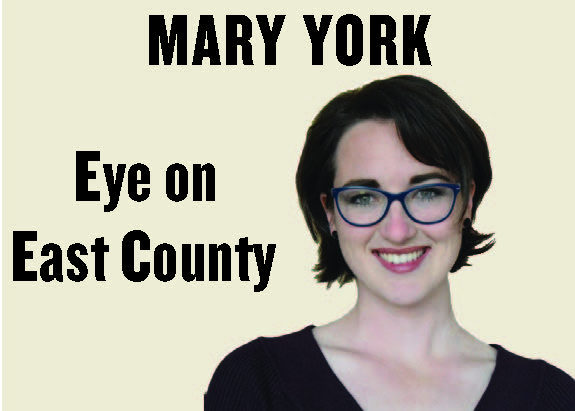Rain slapped the parking lot as I hurried toward Hooleys Public House in Grossmont Center. I have been hearing about Hooleys for as long as I have worked at The Californian, but San Diego sports quite a few Irish pubs – several of them in East County – and it has taken me awhile to get this far down the list.
I am glad I did.
The front door was lit with a cozy glow coming from the lobby and a cheery-faced young woman greeted me with a smile and some convivial chatter. Surrounded by darkly stained wooden beams and the castle-like gray rock walls of the pub, she easily could have been a maiden from the Emerald Isle itself.
I asked to be seated in a booth and was led down a twisting, tavern-like passage in which private booths nestled along the walls and soft chatter floated up through wooden rafters.
The aesthetic of this place is perfectly on point. It has just the right amount of Celtic gloom and cheesy tributes to Medieval Ireland without being over-the-top Renaissance fair.
My waitress placed a Guinness down in front of me and felt a wave of comfort sweep over me. It felt good to be keeping company with the Golden Harp again.
This certainly is not the only time I have ducked into a dark pub, looking for warmth and cheer. In fact, wherever in the world I have travelled, I have never turned down the temptation to walk into an Irish pub – much more so when St. Patrick’s Day looms close on the horizon, though I try to avoid going out on the actual holiday. St. Patrick’s Day is a bit of a let down in San Diego. It feels like any other night out on the town, except green. But I know Ireland better than that, at least well enough to be disappointed every March.
When I finally found myself facing a Hooleys plate supporting piece of fish that had been battered and fried into bliss and some of the thickest, bronziest “chips” I have seen yet in East County, I felt myself reliving another rain-drenched evening – this one in the heart of western Ireland, County Mayo, in my ancestral town.
That particular February day had been wet as well – though most days in Ireland are. I had found refuge from the gray street and its puddles inside the lobby and restaurant of the Gateway Inn where I had booked a three-night stay. It was 2015 and I was here to find my roots.
Swinford, Ireland is, for me, suspended in time. It was once the home of my family and has since become a type of home for this restless wanderer. It’s a place where I can say, definitively, these people are mine.
Home is an interesting concept in Irish culture. The last century and a half has seen a mass migration of Irish to other parts of the world. Even in Swinford, a cluster of houses and storefronts that line two main streets, the impact of economic lows are evident. There is a statue in the main square commemorating all the women who had to say ‘goodbye’ to husbands who left them to work in England. My great-great grandma would have been among those women.
“No on stays here long,” Matthew the barman of a little pub called the Sheepwalk tells me. “They go away to college and never come back. No jobs here.”
“Where do people work, then?” I asked as a sat at the bar with a spicket of old men who had been occupying their seats since before the afternoon had begun. “What’s the industry in Swinford?”
“We have a Tesco,” answered one of the men to a volley of laughter.
I’ve explored the streets and farmlands of Swinford several times now. I have been inside the grand old church and crept my way through their sleeping cemeteries. What must have once been a thriving corner of the world seems swept away and forgotten, as if Time has put it under a sleeping spell from an old fairy tale.
The nostalgia of home for the Irish is strong and so many of their songs talk about their displacement. It must be a blessing and a curse, to have such a strong sense of where you are from.
Home for Americans is a slightly different concept. Home is a place we grew up, but it is also a place we get to reshape and fashion as life goes on. And because Americans are united not by race or creed or background but by ideals, our concept of home is not often “country” as it is in Ireland.
Many of those poetic souls found their way to America and, in a delightful historical plot twist, created a new breed of people: Irish Americans.
Irish Americans, especially as the generations run on, are American in mindset. Culturally American, you could say.
But you can’t take the Irish out of an Irishman, no matter how much you dilute it with stars and stripes, which is why there is such a profound sense of Irish pride in a country where literally everyone is an immigrant of some kind.
Granted, Irish pride is extremely marketable, which finance the fairytale, you might say. That may be why so many Americans dress up in green and wear shirts that say “Kiss me, I’m Irish” even though they have no actual claim to Emerald Isle.
I won’t hold it against them. No Irishman I know has ever turned away company at the bar stool. You don’t need to be Irish to drink and be merry.
That, of course, leads us back to the issue of celebrating St. Patrick’s Day.
Having wandered the ragged roads of a County Mayo and seen the waters of Cork, cheap green beads and dyed beer do not feel like the proper way to celebrate my Irish ancestors (though I can see them all shaking their heads now, saying, “beer is always an appropriate way to celebrate.”)
My great grandparents came to this country looking for work, for a future, and they built one. They built several. There was a time when the Irish were treated very poorly in this country – much the same as other immigrant groups are treated now. Now we celebrate their vitality, their luck and their contributions to this great nation.
So maybe the best way to commemorate my Irish heritage is not on St. Patrick’s Day but over the course of the whole year, by uplifting those who are new in this country and seeking to make a life for themselves. Maybe by being an advocate and a friend to the immigrants in my community, I can honor the memory of the immigrants in my family tree. Perhaps, by making this country feel like home for others, I can reconcile the distance between where I sit here in East County and a small village in old Ireland.
But either way, you can definitely count on seeing me at Hooleys on St. Patrick’s Day.













